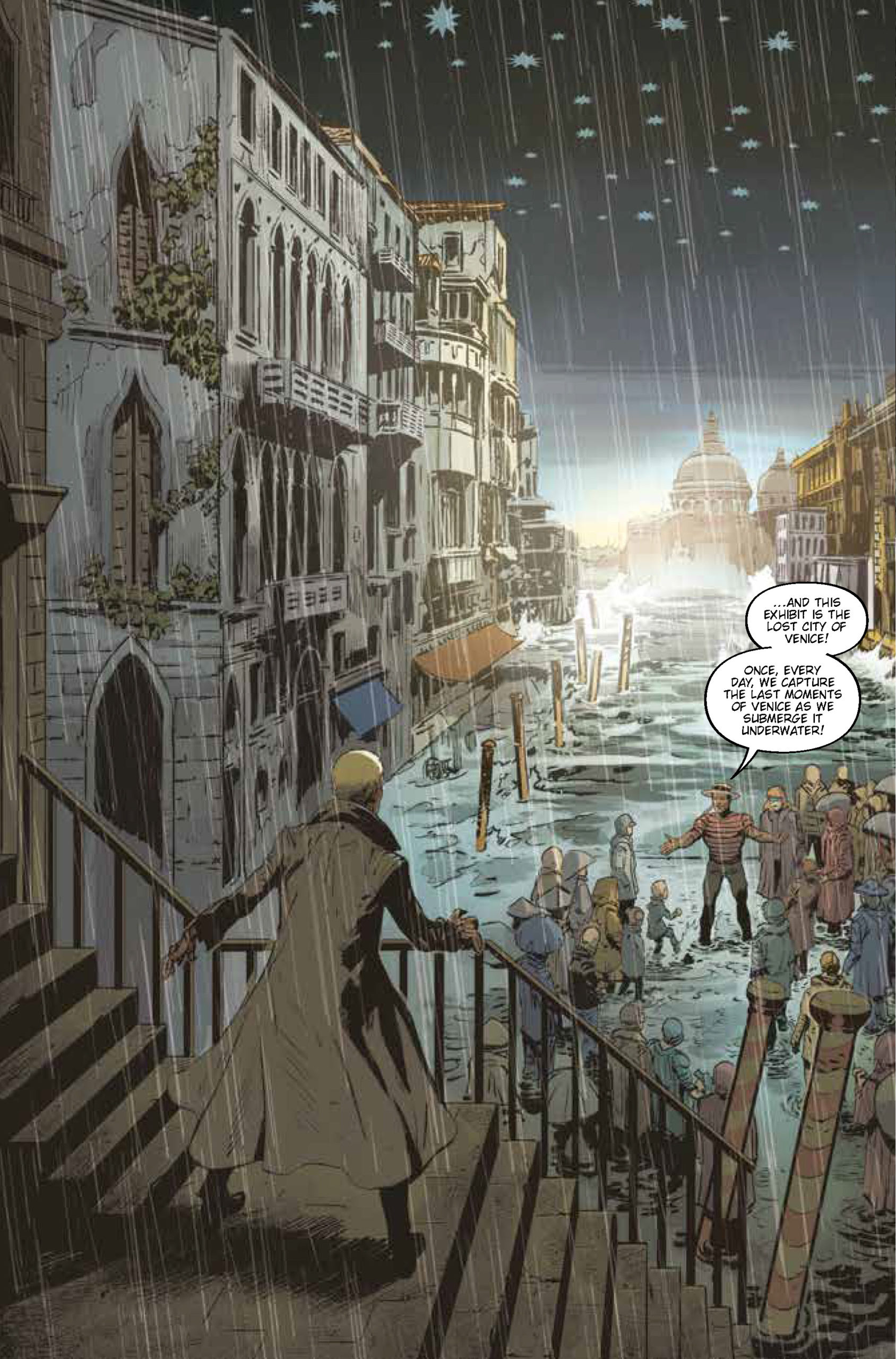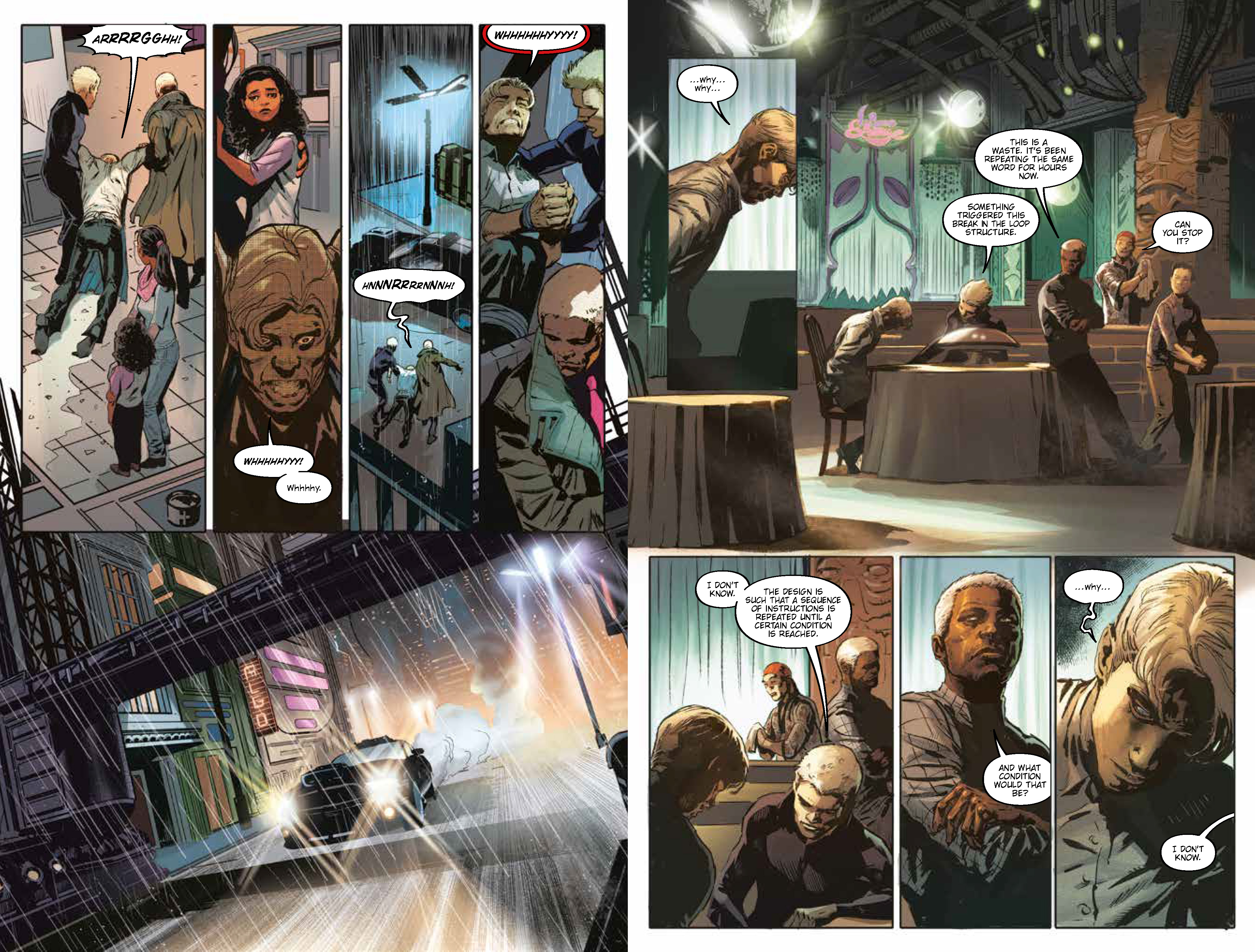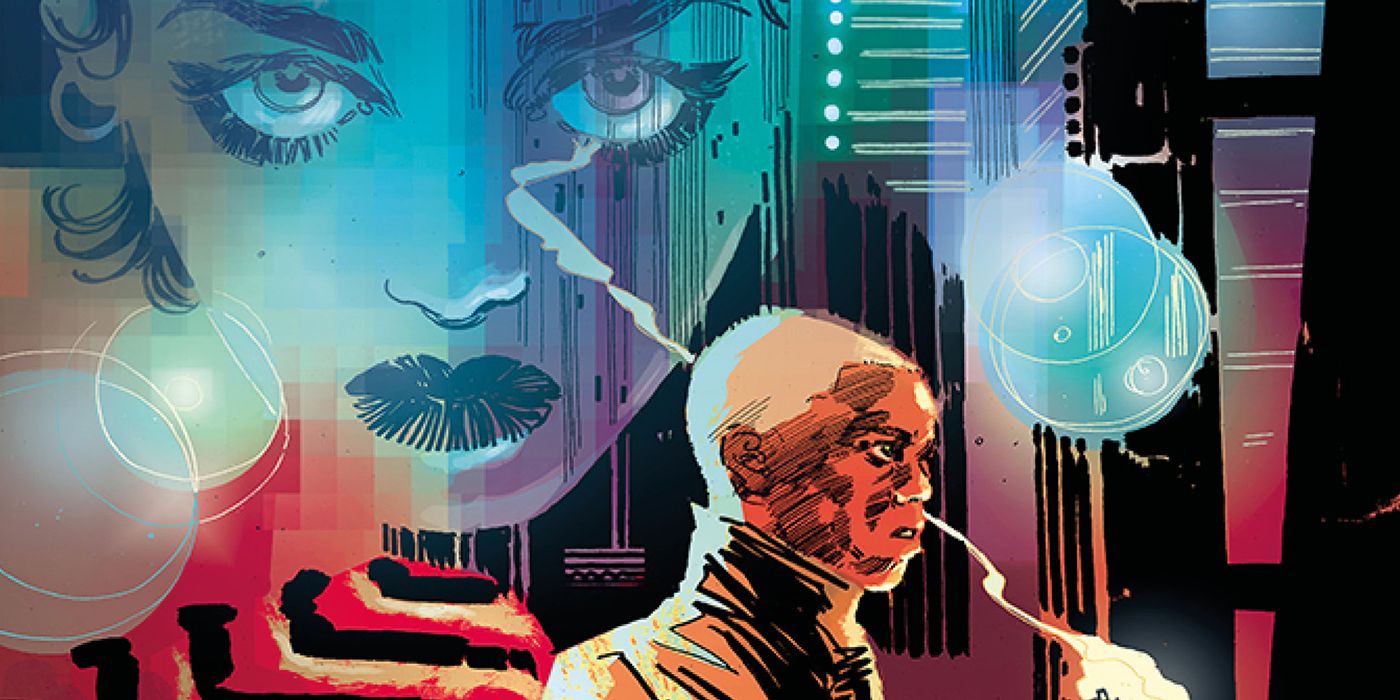Table of Contents Show
Blade Runner: Origins #4 and #5 bring one arc to a close and begin a new arc. With that said, however, there seems to be uneven attention to the two arcs that I think is to its detriment. One issue feels like it wants to be many things all at once, leaving the reader unsatisfied. Meanwhile, the other issue knows exactly what it wants to be and provides a fascinating philosophical discourse. It is by no means bad, but it feels like a hard pivot that we shall see eventually if it will pay off.
Blade Runner: Origins #4
This is a big action issue, with Cal closing in on Asa/Lydia, finding out the truth of the matter, and taking a new direction. But it’s this new direction in which this Blade Runner: Origins #4 slips up. This doesn’t feel like the end of an arc; this feels like the setup for the next arc, which becomes apparent when we talk about the following issue. We have Cal find out about the Lydia/Asa brain transference, get threatened by Ilora to set up the ticking clock in the next arc, and suddenly find his will to live again and quite the LAPD. Unfortunately, this happens so quickly that the reader can easily become lost in the abrupt way things are handled.

It’s still a gorgeous issue; Fernando Dagnino does some excellent work in the art department. The tragic but still matter-of-fact way he portrays Effie’s death is fantastic. The way she gets shot but slowly but surely falls to the ground dead over several panels shows the brutal and callous end of life. The dynamism of the action, as well as the tragedy of showing a replica of Venice flooded, is a fantastic way to set the pace and tone.
I don’t want to be too harsh on K. Perkins and Mellow Brown because the previous issues and the following issue show their talents as writers. But Blade Runner: Origins #4 felt like it had no idea exactly what it wanted to be. Did it want to be a big action climax? Did it want to be a story of a man sacrificing his career for his beliefs? Did it want to end the current arc? Did it want to set up the next arc? It chooses to be all of these things at once, and that is a shame. The pieces of a great issue are there, but they are just obscured in the attempt to be everything simultaneously.
Blade Runner: Origins #5
In a dramatic shift from the previous issue, Blade Runner: Origins #5 knows exactly what it wants to be and does it with style. It’s about identity. Who are you? What are you? And many other questions permeate this issue in various interesting ways. The most overt is probably Arnault, the poor Nexus 4 that malfunctions when asked the question “why?” He can’t process what he’s doing and why because he’s merely following his code, a predetermined path laid out before him long before he was ever activated or created. Nexus 4’s weren’t given the ability to process things existentially, so when he tried, he malfunctioned. Is it because he is incapable or that he is evolving so that it is possible, but the process he was born into is just not compatible with it?

Then you have a quite fascinating discussion between Asa/Lydia and Divina. Divina is a drag queen, and Asa/Lydia are simultaneously a female psyche and a male body. Gender identity and the dehumanization that can happen from those around them is the point of this discussion. Divina lost their partner to a Replicant many years ago, so they are naturally not exactly receptive to the idea of Replicants being people. To them, a Replicant is a killing machine that took everything they held dear.
To Asa/Lydia, Replicants are a new lease on life and an attempt to live up to Tyrell’s motto of “More human than human.” They have to learn to get over their inherent prejudices against each other’s kind and find a middle ground. Both of them have suffered at the hands of the other’s kind, but if this problem is to be solved, they must put their grief aside. It’s a beautiful scene that shows the power of this creative team when they are operating on all cylinders.
Blade Runner #4 And #5 Are Better Read As The Same Arc
Blade Runner: Origins #4 and #5 are a lopsided pair of issues. One wants to be a big climax and a touching story but fails to live up to its attempts for greatness. The other is a meditation on identity through the lens of gender and robotics. One is a slower-paced thinkpiece, and the other is an action romp. And they both cannot be read without the other, meaning they both compliment each other and show each other’s flaws. Both issues show that this creative team is spectacular but is still fallible, which is quite fitting with the franchise’s themes.
